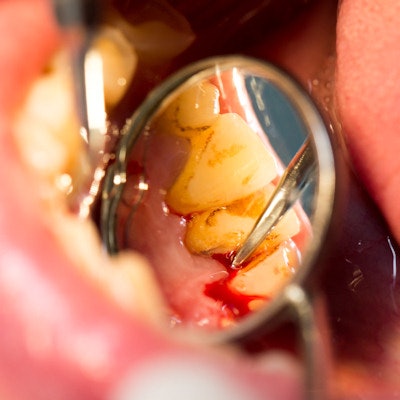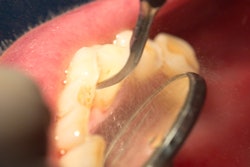
Talking with patients about their periodontal disease risk may encourage them to become active participants in their oral care, according to a new study in the Journal of Periodontology.
Researchers compared results for patients who were counseled about their risk for periodontal disease with those who were not. The patients who were advised about their oral health had reduced plaque and gum inflammation, they found.
"Our study shows that by adopting a simple psychological intervention, aided by the use of an online risk assessment tool, we can significantly improve measurable clinical outcomes and reduce initial signs of gum disease in patients seen routinely in general dental practice," stated lead author Koula Asimakopoulou, PhD, a psychologist and professor of health psychology at King's College London, in a press release.
The complications of untreated periodontal disease are well known, yet getting patients to participate in their care can be challenging. Researchers wanted to see if a communication strategy known as risk communication along with behavioral change techniques would be useful in improving periodontal outcomes. This is the first study to see if risk communication and behavioral techniques such as goal setting, planning, and self-monitoring can improve periodontal outcomes, according to the study authors (J Periodontol, April 17, 2019).
The researchers randomly assigned 97 adults with moderate periodontal disease into one of three groups that received the following:
- Treatment as usual
- Individualized report on their periodontal disease risk
- Individualized report plus a program of goal setting, planning, and self-monitoring based on psychological theory
Clinical, behavioral, and psychological measures were obtained from patients at baseline, then at four and 12 weeks.
The percentage of plaque was reduced significantly (p < 0.05) in the intervention groups but not in the treatment-as-usual group, the study authors reported. While the number of sites with bleeding on probing was decreased in all groups, the effect was more pronounced in the intervention groups, they noted.
The frequency of patients' interdental cleaning improved only in the intervention groups (p < 0.05). Brushing frequency and probing depths showed little variation across time and groups, the authors reported.
The researchers concluded that a simple behavioral intervention using individualized periodontal disease risk communication reduced plaque and bleeding and increased interdental cleaning over 12 weeks.



















